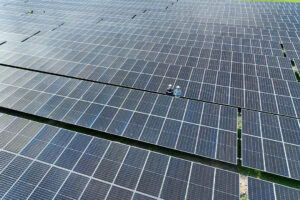THE GOVERNMENT will need to address the high cost of electricity and imported materials before the manufacturing of solar photovoltaic modules can become competitive, an industry association said.
“The main challenges here are the cost of electricity and the cost of importing materials,” Philippine Solar and Storage Energy Alliance Chairman Ma. Theresa Cruz-Capellan said via Viber.
She said that the Department of Energy has taken some policy action to make electricity for manufacturers more competitive but noted the need for incentives to develop the sector.
“Insofar as imported materials are concerned, this is a customs and tariff policy issue. But if we seek to be a key producer of panels, we have to offer incentives to realize this dream,” she added.
According to the International Trade Centre (ITC), the Philippines has the potential to export $788.4 million worth of solar photovoltaic (PV) modules, to markets like the US ($189.4 million), China ($171.6 million), the Netherlands ($64.7 million), Vietnam ($46.4 million), and Germany ($43 million).
Ms. Cruz-Capellan said: “I suggest that the Philippines start with a simple assembly of panels,” she said. “The second stage is to consolidate the supply chain. The Philippines does not have access to key materials needed.”
“There has to be a clear-cut plan on how to make our panels compete with Vietnam and Malaysia,” she added.
According to the ITC, Vietnamese solar PV modules accounted for nearly 2% of the country’s exports in 2022, surging to $6.9 billion in 2022 from $135 million in 2013.
It is the world’s second-largest supplier after China, accounting for nearly 10% of global exports, ITC said.
Meanwhile, Malaysia has a 6% market share. — Justine Irish D. Tabile

